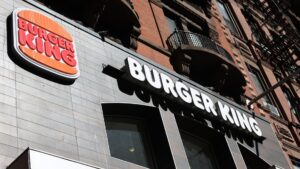Restaurant Brands International: Navigating Challenges with Optimism
In a landscape where dining habits shift rapidly, Restaurant Brands International (RBI) has recently faced a pivotal moment. On Thursday, the company reported its quarterly earnings, revealing both challenges and signs of recovery that investors should pay attention to. While their earnings and revenue fell short of analysts’ expectations, with same-store sales across iconic chains like Popeyes, Burger King, and Tim Hortons declining, the tide appears to be turning.
Key Financial Highlights
CEO Josh Kobza spoke to CNBC following the earnings report, sharing an optimistic outlook as the company witnesses improvements heading into the second quarter. "As we come into Q2, that momentum has improved meaningfully," he asserted, suggesting that these early signs may indicate a brighter path ahead.
Here’s a snapshot comparing RBI’s recent report with Wall Street expectations, based on insights from analysts:
- Earnings per share (EPS): 75 cents (adjusted) vs. 78 cents expected
- Revenue: $2.11 billion vs. $2.13 billion expected
A Closer Look at the Numbers
RBI reported a net income of $159 million for the first quarter, translating to 49 cents per share, a decline from $230 million or 72 cents per share in the previous year. However, when excluding transaction costs related to the acquisition of Burger King China, the adjusted earnings held steady.
Net sales rose by 21%, reaching $2.11 billion, largely driven by strong performance from Popeyes and Firehouse Subs. Overall, despite experiencing same-store sales growth of just 0.1%, Kobza indicated that omitting last year’s leap day would place growth at about 1%.
Brand Performances Under Scrutiny
Each of RBI’s core brands faced unique challenges during the quarter. Tim Hortons, responsible for over 40% of the company’s revenue, reported a slight dip of 0.1% in same-store sales, falling short of Wall Street’s 1.4% growth predictions. Perhaps more enticingly, Tim’s newest breakfast collaboration with actor Ryan Reynolds hints at innovative marketing strategies to turn things around.
Burger King’s same-store sales shrank by 1.3%, worse than the anticipated 0.9% decline. However, when compared to its peers, Burger King’s performance was relatively strong—most notably against McDonald’s, which faced a 3.6% drop. With both chains navigating consumer caution, RBI’s consistent trends across income groups showcase a nuanced understanding of consumer behavior.
The most substantial decline, however, was seen at Popeyes, where same-store sales plunged 4%. This stark contrast to last year’s Super Bowl-driven growth can be a sobering reminder of the dynamic nature of brand visibility and market engagement.
International Growth Amid Domestic Challenges
Interestingly, demand surged outside North America, with RBI’s international segment enjoying a 2.6% boost in same-store sales. This opens up discussions on how the company can pivot towards more robust international marketing strategies to counterbalance domestic fluctuations.
Strategic Outlook
Looking forward, RBI is steadfast in its growth strategy. The company has committed to a capital expenditure forecast of $400 million to $450 million for 2025 and continues to target long-term growth projections that include an average of 3% same-store sales growth and 8% organic adjusted operating income growth from 2024 to 2028.
At Extreme Investor Network, we believe that understanding such movements and trends in the restaurant sector is crucial not just for investors, but also for anyone interested in the future of dining. Staying abreast of developments like these helps position our readers to make informed decisions in an ever-evolving marketplace.
In essence, while RBI faced a challenging first quarter, signs of recovery and strategic initiatives suggest that it may not be too long before we see a revitalized performance from this powerhouse. As always, staying informed and adaptable is key to navigating the landscape of business investment.

